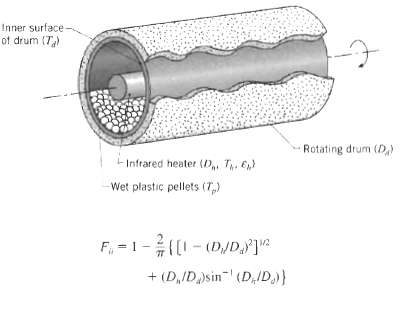A novel infrared recycler has been proposed for reclaiming the millions of kilograms of waste plastics produced
Question:
A novel infrared recycler has been proposed for reclaiming the millions of kilograms of waste plastics produced by the dismantling and shredding of auto-motive vehicles following their retirement. To address the problem of sorting mixed plastics into components such as polypropylene and polycarbonate, a washed stream of the mixed plastics is routed to an infrared heating system where it is dried and subsequently heated to a temperature for which one of the components begins to soften, while the others remain rigid. The mixed stream is then routed through steel rollers, to which the softened plastic sticks and is removed from the stream. Heating of the stream is then continued to facilitate removal of a second component, and the heating/removal process is repeated until all of the components are separated. Consider the initial drying stage for a system comprised of a cylindrical heater aligned coaxially with a rotating drum of diameter Dd = 1 m. Shortly after entering the drum wet plastic pellets may be assumed to fully cover the bottom semi cylindrical section and to remain at a temperature of Tp = 325 K during the drying process. The surface area of the pellets may be assumed to correspond to that of the semi cylinder and to have an emissivity of ?p = 0.95.
(a) If the flow of dry air through the drum maintains a convection mass transfer coefficient of 0.024 m/s on the surface of the pellets, what is the evaporation rate per unit length of the drum?
(b) Neglecting convection heat transfer, determine the temperature Th that must be maintained by a heater of diameter Dh = 0.10 m and emissivity ?h = 0.8 to sustain the foregoing evaporation rate. What is the corresponding value of the temperature Td for the top surface of the drum? The outer surface of the drum is well insulated, and its length-to-diameter ratio is large. As applied to the top (d) or bottom (p) surface of the drum the view factor of an infinitely long semi cylinder to itself, in the presence of a concentric, coaxial cylinder, may be expressed as

Step by Step Answer:

Fundamentals of Heat and Mass Transfer
ISBN: 978-0471457282
6th Edition
Authors: Incropera, Dewitt, Bergman, Lavine





